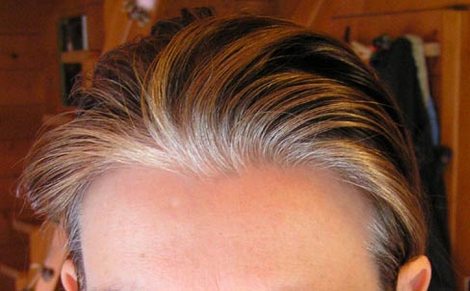How to Stop Menopause-Induced Hair Shedding: Five Effective Treatments
Many women who approach their late 30s can notice their hair shedding, especially in the frontal and temporal parts of the scalp. Hair loss can become progressively worse as the woman moves towards menopause. Dealing with menopause-induced hormonal changes, all those mood swings, hot flashes, decreased libido and weight gain, is hard enough, but hair loss can add enormously to women’s sufferings during their middle-age hormonal transition.
In fact, scientists warn that, by the age of pre-menopause, most women are already at an increased risk of losing a great part of their locks. The rates of hair loss during menopausal years can escalate as much as 50 percent, while, in post-menopausal women, it can increase a whopping 75 percent!
What exactly triggers female hair loss during menopause is still unclear; however, most researchers link it to a steady decline in the female hormone estrogen. Another theory is that menopausal women secrete elevated levels of the male hormone testosterone, which triggers hair loss in women just the same way testosterone induces baldness in men. Changes in the production, or ratio, of other hormones are also suspected to be a contributing factor in female hair shedding during menopausal years.
In the US alone, more than 30 million women endure hormonally-triggered balding that is resistant to most traditional treatments, such as herbal therapy, hair masks with beneficial oils, or regular scalp massages. In addition to hair loss, the quality of scalp hair can vastly deteriorate during the hormonal transition, leaving locks to suffer from decreased vitality, lessened volume, and weakened roots. The hair texture changes, too, as well as does the hair colour that starts losing its natural pigment and gradually succumbs to greying.
According to many hair experts, natural therapies are usually ineffective in fighting menopausal balding. However, modern pharmaceutical medications combined with a right type of nutritional therapy can do wonders in stopping female hair loss and even restoring most parts of the vanished locks. The following five treatments represent the most effective approaches to deal with menopausal hair loss:
1. Dietary Modification: Good nutrition is the key to restoring the health of hair at any age, but it is particularly important during menopausal years when the metabolism slows down and absorption of nutrients naturally decelerates. Eating a nutrient-dense diet that is rich in all necessary hair-building ingredients is the most important factor involved in reversing hormonally-induced baldness. The diet should be rich in complete animal proteins from meats, cheese and fish; nourishing saturated and monounsaturated fats, such as butter, lard and unrefined olive oil; vitamin C from fresh and fermented fruits and vegetables; B-vitamin complex mostly found in raw or lightly cooked animal products; and all-important fat-soluble “master vitamins” A, D, E and K that can be obtained from egg yolks, beef liver and other animal organs, oily fish, nuts, cod liver oil, caviar and miso. The diet should also be supplemented by small amounts of polyunsaturated oils containing Omega-3, Omega-6, and Omega-9 essential fatty acids found in deep-water fish, meats from grass-fed animals, flax seeds and walnuts. Hair quality will also vastly improve will an additional supplementation of zinc, biotin and sublingual B-vitamin complex.
2. Rogaine (Minoxidil): This effective, over-the-counter medication is the only non-prescription, FDA-approved treatment for stopping hair loss, including that caused by the menopausal transition. It helps treat thinning hair and, in some cases, quickly restores hair density and strength of hair follicles. Depending on the severity of hair shedding, women can opt for either a regular 2-percent, or extra-strength 5-percent Minoxidil solution.
3. LLLT, or Low Lever Laser Therapy for hair restoration: This kind of high-tech treatment is used to regenerate hair follicles, hamper hair root inflammation and support hair cells, thus reviving the growth of hair and combating hair loss. LLLT is particularly effective in treating hormonally-induced hair shedding.
4. Propecia (Finasteride): This is a prescription medication, mostly used to inhibit male-pattern baldness. However, several recent studies show that Propecia can be effective in treating female hair loss, too. However, women have to be warned that Finasteride-containing drugs can potentially induce birth defects and have other dangerous side effects; this is why they have to be taken only under a doctor’s supervision.
5. Hair Transplantation: Advanced hair transplants, particularly those using microsurgical techniques, are a promising treatment for female hair loss that is resistant to other conventional therapies. This highly effective medical technology involves a transplantation of living hair follicles into balding scalp areas, which improves hair coverage and completely restores previously lost hair density in almost 100 percent of cases.
Robin Makris
Posted on May 28, 2008
Filed Under Hair Loss, Hair Loss Treatments
Comments
Leave a Reply

